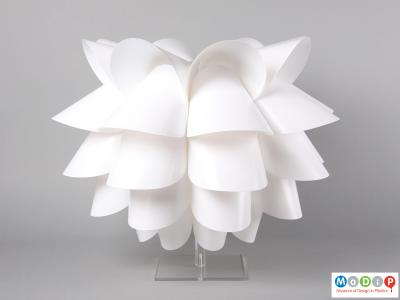Plastics have led to the development of a joint that eliminates the need for traditional fixing devices such as screws and clips. It is known as the click or snap joint. One of its earliest and most ubiquitous uses was in poppit beads, which were the rage in the 1950s. The same method is used in the do-it-yourself assembly light exhibited here (1). Made of polypropylene, it is entitled Knappa and was designed by Brylle / Jacobsen in 2006 for Ikea.
The click or snap joint is so called because two components (usually both plastic) click together. One is typically in the form of a hook or, as here, a knob; the other is a rebated or undercut hollow or hole. Once assembled the joint is virtually stress free, unlike, for example, self-tapping screws which put the material under permanent stress and can lead to loosening or cracking over time.
Few other materials have the resilience, strength and flexibility necessary for this kind of joint. Spring steel could be used to produce a similar effect but would involve several components and complicated machining whereas in the case of plastics the joints are integrally moulded as part of the components which need to be joined together.

